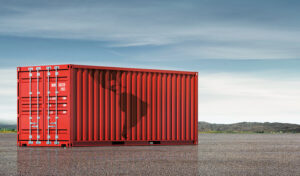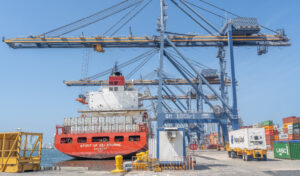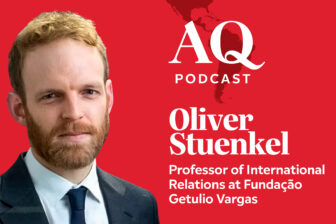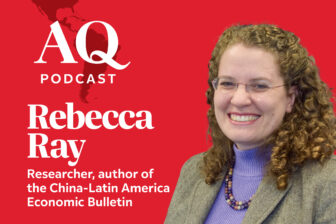This article is adapted from AQ’s special report on cybersecurity
A defining trend of the last year is the fluidity of global supply chains. Companies are on the move, driven by the memory of COVID-19 disruptions, seismic shifts in demand and supply, demographic changes and, increasingly, geopolitics. Latin America’s economies have yet to take full advantage of this dynamism. To do so, they will need to find a way to work together before the window of opportunity closes.
For the 25 years leading up to the pandemic, McKinsey calculates that less than 2% of global supply chains moved to a different country. This stickiness reflects the business maxim that if it isn’t broken, don’t fix it. Yet today corporations are becoming untethered, and more boards of directors and CEOs contemplate significant shifts in their global footprints.
Some of this itinerant money is making its way to the Western Hemisphere. Mexico holds the pole position due to its geographic location, the USMCA trade and investment deal, and its inclusion in the U.S. Inflation Reduction Act, which allocates hundreds of billions of dollars in subsidies to create North American electric vehicle and renewable supply chains.
As a result, and despite many less than business-friendly policies from President Andrés Manuel López Obrador’s administration, industrial parks along the border are full and commercial real estate vacancy rates hover at a low 5% nationally. The last quarter was a banner one for foreign direct investment (FDI), led by autos and electronics. Recent growth, too, has surprised analysts on the upside, with GDP expectations now above 2% for 2023.
But these investment flows resemble more a stream than a tsunami. To put it into perspective, foreign investment is back to its pre-COVID-19 levels, coming in around $40 billion annually. And Mexico’s global investment share is holding steady at just 2% to 3% of international flows, despite being the 15th largest economy in the world. It has maintained, not gained, market share as global supply chains are on the move.
Brazil, too, has seen investment inflows—China’s BYD, which is on a path to become the world’s largest electric vehicle maker, purchased an old Ford plant to kick off its South American car production. More money is flowing into energy, agriculture and mining. Overall, the tenth largest economy in the world attracts just 3% of global FDI and has struggled to keep that pace. As for Chile, Colombia, Peru and Argentina, political uncertainties have tempered financial interest, flatlining foreign investment to less than 3% of the global pie. In contrast, hundreds of billions are pouring into Vietnam, Singapore and Indonesia. Southeast Asia now captures more than 10% of global FDI, much of it driven by new manufacturing capacity.
One of Southeast Asia’s advantages over Latin America has been its incorporation into regional supply chains. Trade between these nations and with the manufacturing powerhouses of East Asia has grown to some 63 cents out of every dollar. And the ratification of the Regional Comprehensive Economic Partnership, a free trade deal among the 15 members, promises to accelerate these ties.
By contrast, in Latin America regional trade remains limited. The Inter-American Development Bank calculates that less than 15% of exports stay within the region. Investment does not fare much better: less than 10% stays in the region.
Regionalism in Latin America has gotten a rhetorical boost this last year. Brazilian President Luiz Inácio Lula da Silva kicked off his new term resurrecting UNASUR (the Union of South American Nations) and CELAC (the Community of Latin American and Caribbean States), two main regional confabs that had gone all but dormant in recent years. The leaders of Colombia, Argentina and Chile have joined him in his efforts.
But less has happened. At UNASUR’s first summit, Lula’s embrace of Venezuela’s authoritarian leader Nicolás Maduro overshadowed the commercial integration efforts on the agenda. Meanwhile, Chile, Colombia, Mexico and Peru have all but forgotten the Pacific Alliance, a decade-old free trade agreement. The Mercosur deal with the EU, which is expected to boost regional production alongside cross-Atlantic traffic, is still on ice in Brussels.
Latin American nations should not turn away from the United States and their privileged positions vis-à-vis the world’s largest consumer market. Due to free trade agreements with the U.S., a dozen nations can potentially tap into the hundreds of billions of dollars in subsidies in the U.S. Inflation Reduction Act. Once the Americas Partnership for Economic Prosperity is developed, the 11 countries that have signed up with the U.S. may benefit from new financing and other support to help build out cross-border industrial and commercial clusters.
The current supply chain reshuffle will not last all that long. History and basic economics show us that corporate footprints will again become sticky, their managers loath to upend profitable operations. Governments still have work to do at home. They need to invest in infrastructure, streamline policies to lower the costs of logistics, improve educational opportunities to diminish significant skills gaps, and more generally take steps to improve the business environment. Finally, to attract international money and production, regionalization is vital, as it can create economies of scale no nation, however well-run, can achieve alone.
Subscribe to The Americas Quarterly Podcast on Apple, Spotify, Google and other platforms












